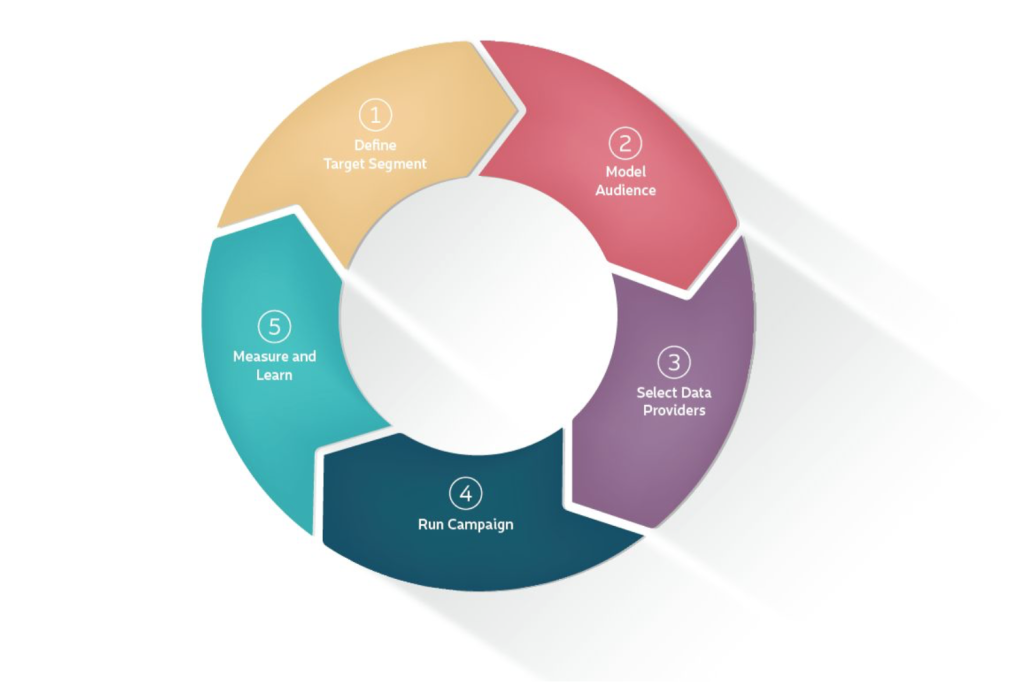The Basics of Successful Mobile Audience Data Handling for Marketers
by Sonja Kroll on 2nd May 2016 in News

What do marketers have to consider when buying data, modelling audience segments, and selecting the right platform? In this piece on mobile audience data handling, Tom Laband, CEO AdSquare (pictured below), addresses marketers who are unsure how to approach audience targeting; and outlines the basic steps that marketers need to take in order to implement a successful mobile campaign.
The smartphone is the most personal of all devices; and it is our access to an increasingly connected world. It navigates us through the day, serves as a remote control, and is now also widely used for shopping. Each of these so-called 'mobile moments' generates an abundance of data points, which can be used for marketing, allowing advertisers to send the right message to play off in the relevant advertising context.
On one side, this is enabled by mobile advertising in real time (mobile programmatic advertising), and on the other side by audience and contextual data (mobile audience data). The following five steps provide guidance on what should be considered when planning campaigns with audience targeting: from planning through to implementation and analysis.

1. Define Target Segment
A clearly defined target group is fundamental for the success of every advertising campaign. Furthermore, when in the process of planning a mobile campaign, it is essentially important to think beyond the known sociological parameters and focus on understanding the personal characteristics of the target group. Think about the everyday life of the people that you would like to reach: In which neighborhoods do they live? Which shops do they often frequent? What are their hobbies? What types of products do they consume? Which apps do they use? Do you know the exact personas you’d like to target?
The more granular you can be about those characteristics, the clearer your target segment will be.
Creating personas (the specific archetypes that represent the customers you target) adds another layer of detail to help you define your segment.
2. Model Audience
 The era of defining audiences only by age, sex, and average household income attributes is now over. In the age of audience targeting, a wide range of data points are available, which allows for holistic audiences to be defined via the selection and combination of those parameters. Decide for yourself whether predefined supplier segments (e.g. Business Traveller) work for you, or whether you’d like to carry out your own modelling. Keep in mind that, for the process of modelling, you will connect different data points with and/or connections and setup custom set of rules, i.e. person 'in the park' AND 'in the sunshine'.
The era of defining audiences only by age, sex, and average household income attributes is now over. In the age of audience targeting, a wide range of data points are available, which allows for holistic audiences to be defined via the selection and combination of those parameters. Decide for yourself whether predefined supplier segments (e.g. Business Traveller) work for you, or whether you’d like to carry out your own modelling. Keep in mind that, for the process of modelling, you will connect different data points with and/or connections and setup custom set of rules, i.e. person 'in the park' AND 'in the sunshine'.
Important Note: the more specific the definition (and the more 'AND' operations), the smaller the reach. Some platforms offer reach and price forecasting so that the right balance can be found already while modeling.
3. Select Data Providers
Mobile programmatic advertising goes far beyond traditional online advertising and offers a variety of new ways to target users: from app usage and local context, to purchase data, and product preferences. To obtain this data, one can turn to the multitude of different data vendors available, which differ not only by their data portfolio, but also by the quality of data offered, and their respective costs. At this stage, it is important to ensure you use the right provider for each defined data point within the modeling. Moreover, in order to onboard your CRM or third-party offline data into a campaign, you will need access to a platform with onboarding functionalities, or one that works with matching partners. This process is offered partially automated and available in both self-service and managed platforms.
4. Run Campaign
Once the target group is defined, and the data providers are chosen, the audience can be activated on your DSP and the campaign can start. Note that generally, DSPs have been developed with a focus on media, and not for data purchase. They are also integrated with a limited number of data providers, do not have the necessary mobile onboarding algorithms, and offer only a basic set of functionality for audience modelling. The alternative in such cases is turning to a neutral Audience Management Platform that specialises in mobile data. Such platforms have been specially developed for the modelling of target groups and allow export or direct integration to activate the audience on your preferred DSP.
5. Measure and Learn
Make use of the RT reporting of your DSP or AMP to optimise audience modelling during the campaign flights. Especially for the calibration between precision and reach, adjustments during the campaign are needed to fulfill the goals.
For optimisation based on KPIs, you should keep in mind that a high click rate can only be partially considered a success metric. Branding campaigns are targeting on campaign goals, like awareness, brand image, and purchase intention, and app campaigns on downloads, in-app purchases and lifetime value. Make sure to unlock the potential of data, not only for the targeting of campaigns, but also for measurement and attribution. To give an example, you can measure whether the number of visitors to a local dealer have increased following a campaign that you have run.
Thanks to mobile audience data, you can target your audience in the right 'mobile moment' – students on campus, current travellers at an airport, or potential customers in the immediate vicinity of your business. When used to its full potential, mobile audience data enables a holistic approach to connecting the dots between online and real-world customer behaviour, empowers higher precision in targeting, and helps advertisers get even closer to their target audience.
AdvertiserDataDisplayDMPMartechMeasurementMobileProgrammaticTargetingTechnology








Follow ExchangeWire